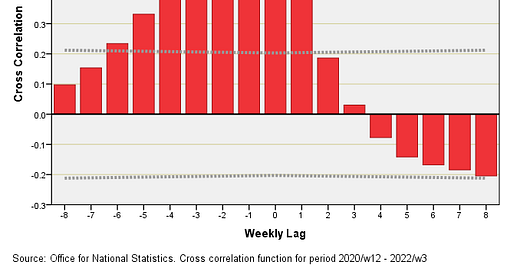COVID & non-COVID Care Home Deaths By Region (part 2)
Regional analysis of weekly COVID & non-COVID care home deaths in England & Wales 2020-2022 (rev 1.1)
Yesterday I focused in on the very first wave of the pandemic and we were able to compare regional mortality within the care homes of England & Wales on a week-by-week basis. Aside from outright peculiarity of non-COVID deaths peaking alongside COVID deaths there’s one other curious feature that I wish to address and that is the tendency of non-COVID deaths to peak before COVID deaths.
We can show this by resorting to a fabulous analytical tool called cross correlation. Most people are familiar with the concept of correlation and the Pearson product-moment correlation coefficient (a.k.a. Pearson bivariate correlation) in particular, this being an index of how closely the values of two sets of data agree. When it comes to things changing over time - as in a pandemic -then we can take this a step further and ask how closely the values of two sets of data agree when displaced in time.
Let’s pull up a slide and work our way through what it means…
What I’ve done here is take the time series …




